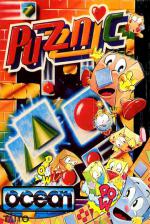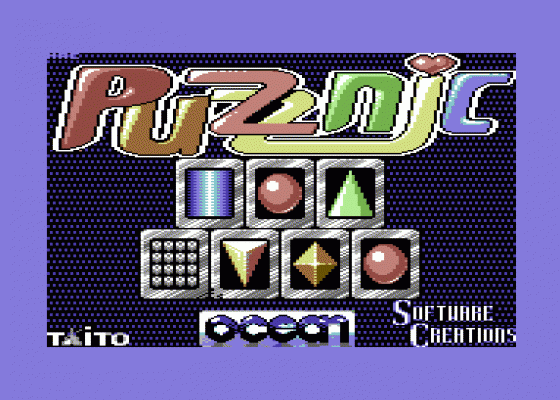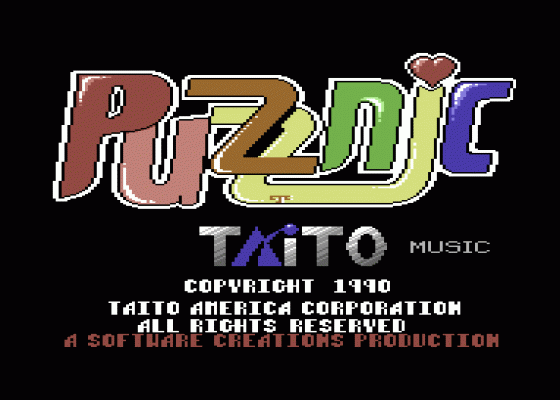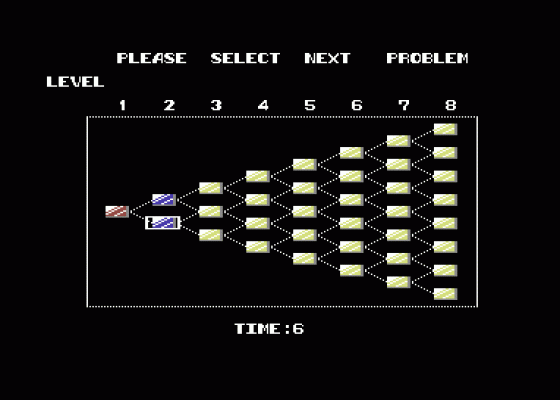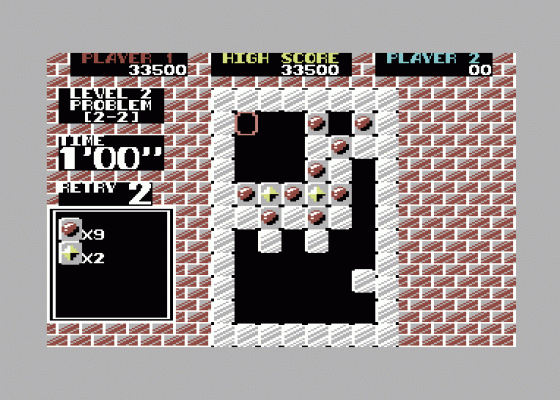
Commodore Format
 1st January 1991
1st January 1991
Categories: Review: Software
Publisher: Ocean
Machine: Commodore 64
Published in Commodore Format #4
Puzznic (Ocean)
There are lots of things you can do with a brick. Build a very small tower. Make a very big paperweight. Invent the world's first sinking submarine. Nope? OK then, how about turning it into a puzzle game and using it to make loads of dosh?
By a rather weird and spooky coincidence that's exactly what Ocean have done. Like Klax, Plotting and Tetris, Puzznic - converted from an obscure Taito coin-op - is basically a load of blocks. No ordinary blocks, these: they come in all sorts of psychedelic colours and patterns and are deviously arranged in strangely-shaped pits underground. When two identical bricks touch each other they disappear, and that's where you come in. You, being a bit of a clever clogs, have been selected from hundreds of applicants (OK, one or two!) to push matching blocks together and clear each screen within the officially designated time limit. There are 36 different levels: you can pick your own starting point from the first 21.
Here comes the tricky bit. Bricks can only be pushed into a free space left or right: and because they can't jump, move upwards or climb on top of one another it's very easy to get them stuck. Brainwork is what's important here.
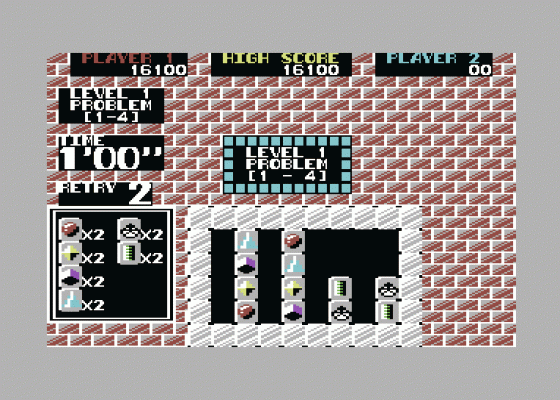
The first few screens are easy peasy: a bit of nifty joystick shunting and you're home and dry. Then, just when you think you've got the hang of it, things start getting seriously hard. Suddenly. you've got to cope with much more involved arrangements, negotiate moving platforms and eliminate three tiles at once. Time's tight but it's crucial to plan ahead: if you don't, you're dead.
For those situations when you completely mess up, you've got a limited number of retries. Press the spacebar and the screen goes back to its original layout - though the time continues ticking down.
Like most puzzlers, Puzznic isn't going to win any prizes for audio-visual effects. The graphics are adequate and the sound is bearable. Not that it makes any difference because what Puzznic lacks in frills it makes up for in addictiveness. It hasn't got the depth of Tetris but it's tough, compulsive and a barrel of fun. Don't be a blockhead, try it for yourself.
Good Points
- Highly addictive.
- 36 mind-boggling screen designs.
- Continue option.
- Tight time limits.
- Start on any of the first 21 levels.
- Retries to get you out of sticky situations.
- Good use of elevator and conveyor blocks.
- Wonderfully difficult later.
- Lots of on-screen statistics.
- User-friendly presentation.
Bad Points
- Irritating in-game tune.
- Could do with a greater variety of on-screen features.
- Awkward control method may cause problems at first.

